Traditional irons and ironing boards may be what many of us use to smooth out creases in our garments, but the best clothes steamers offer an alternative solution to crumpled clothing, bedding and more.
Owing to their convenient handheld design, clothes steamers have also become increasingly popular for household use in recent years. This is particularly true among younger generations, who favour the speed, efficiency and compact nature of the crease-busting appliances.
However, you might be among those more reluctant to swap out your trusty iron, which can be more effective at creating sharp creases and may work better on heavier fabrics, such as linen and cotton, compared with a lightweight clothes steamer.
If you’re trying to decide between a clothes steamer and an iron, there are a few things to consider. Do you want a design that’s easily portable for frequent travel and business trips? Or are you after a more industrial appliance to help you tackle large loads of laundry?
With benefits and drawbacks to each appliance, I asked three experts for the full lowdown on which crease-buster is best. Before you make your decision, here’s everything you need to know about traditional irons and contemporary clothes steamers.
What is the difference between a clothes iron and a steamer?
“The main difference between a steamer and an iron is that a steamer releases hot steam to relax fabrics, leading the creases to drop and smooth out,” says Matt Connelly, CEO and laundry expert at dry cleaning chain ihateironing. “On the other hand, an iron uses a combination of pressure, heat and steam to flatten fabrics, thus ‘pressing’ down the creases.”
The size and function are marked differences, too. While handheld steamers are compact and heat up within seconds, irons require separate boards and can be a lot heftier as well as taking longer to heat up. Irons, however, can boast various temperature settings for different fabrics, while clothes steamers tend to have just one setting. When it comes to potential risks to clothes, there’s a higher risk of damage with an iron, owing to direct contact, whereas a steamer simply hovers over clothes.
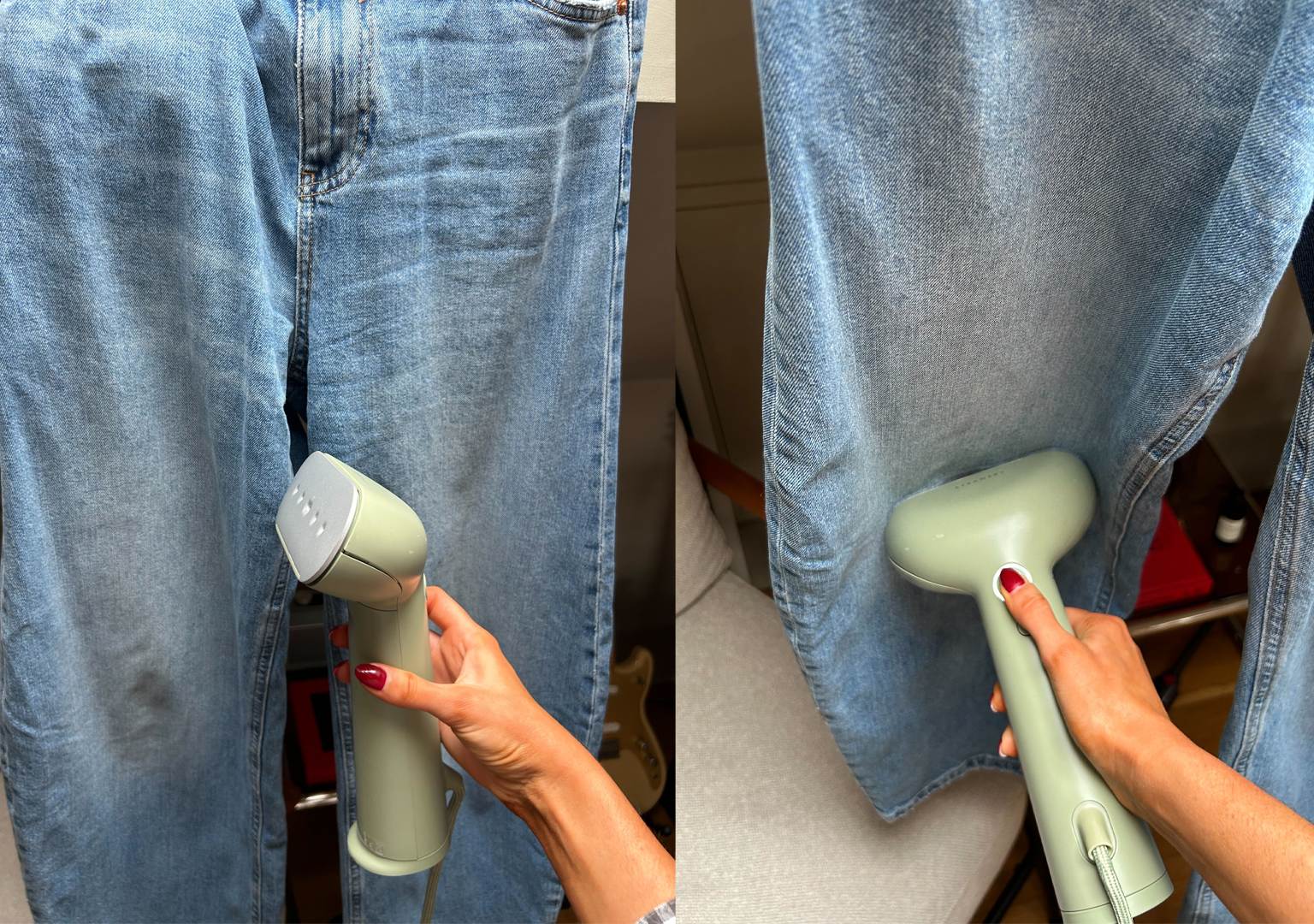
“As a stylist, I’ve never owned an iron, as I rely on my trusty steamer instead,” says fashion writer and stylist Harriet Davey. “Steaming on the day saves me from having to add in the additional step of ironing all my clothes before I put them away.”
“There’s a reason why fashion shows and retail shops around the world use steamers instead of irons,” adds Ben Fridja, founder of appliance brand Fridja. “They’re more versatile, kinder to fabrics, and pose almost no risk of damaging clothes,” he says.
The steamers we buy for our homes are usually handheld, but there are also upright models available that are often used on fashion shoots or in busy households with big laundry loads. “If you have the space (or a lot of clothes to steam), these are well worth it, as you can steam so many items in one go,” says Davey, who recommends Steamery’s cumulus model (£250, Steamery.co.uk).
What are the benefits of a clothes iron?
“Ironing creates a crisp and neat finish to fabrics, and it’s easy to control the direction of how you’d want to flatten out specific items,” says Connelly. “This is especially important for garments like shirts where the collars, cuffs, sleeves, and yoke need to be pressed down for a sharp look, and makes it easy to work around buttons or zippers.”
Another benefit of using an iron is how long they can run in a single session. A handheld steamer “can only hold a small amount of water, so is only best if you want to steam a couple of items (without having to refill) at a time,” says Davey.
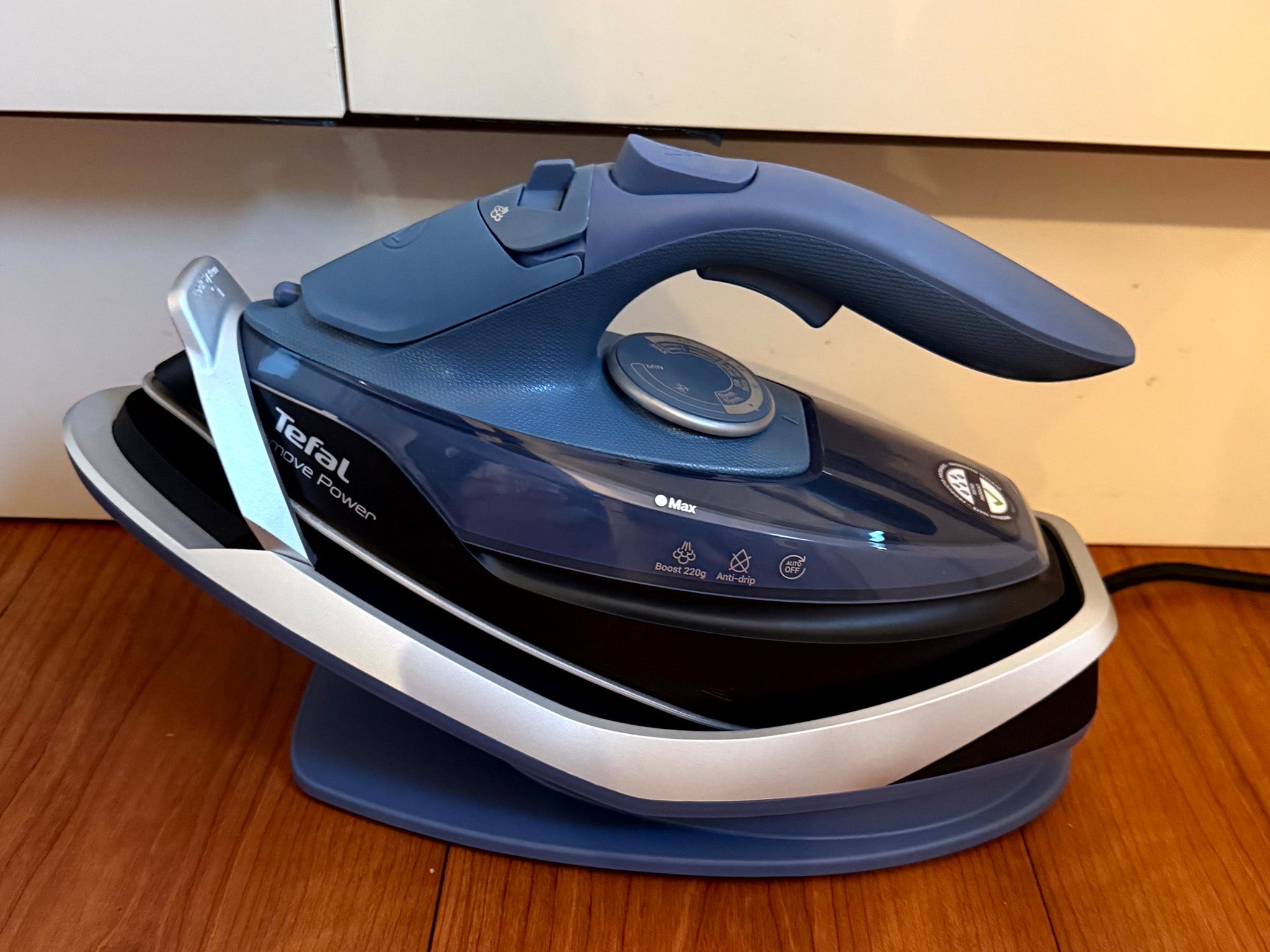
“Steamers might also struggle with heavy fabrics, for example, denim or thick cotton,” says Isabella Forgione, AO’s small appliances expert. “Many irons feature a steam boost setting and larger water tanks, making them better equipped to be more effective on thicker fabrics.”
What are the benefits of a clothes steamer?
Compared with traditional irons, which require a board (or other flat surface) to press on, handheld clothes steamers take up little space in storage. You also won’t need to keep repositioning your garment, as you can just hang it up and get steaming, speeding up the process compared with using a traditional iron.
Clothes steamers are also likely to be kinder to materials. When using a traditional iron, “the temperature could potentially scorch or damage delicate fabrics if you’re not careful of the setting”, says Forgione. Indeed, clothes with “delicate features like beads or sequins can also be damaged if too much heat or pressure is applied”, warns Connelly.
Comparably, handheld steamers are lightweight, making them ideal for travelling. “The joy of a handheld steamer is that it’s small enough to store at home, and take on holiday,” says Davey. “I’ve even taken mine travelling to Southeast Asia, as it’s the easiest way to be crease-free on the go.”
Fridja agrees, explaining that he always travels with a handheld steamer: “If you’ve ever borrowed a hotel iron, you know there’s a risk – it might be old, someone else might have stained it, and that’s the last thing you want before a big meeting.”
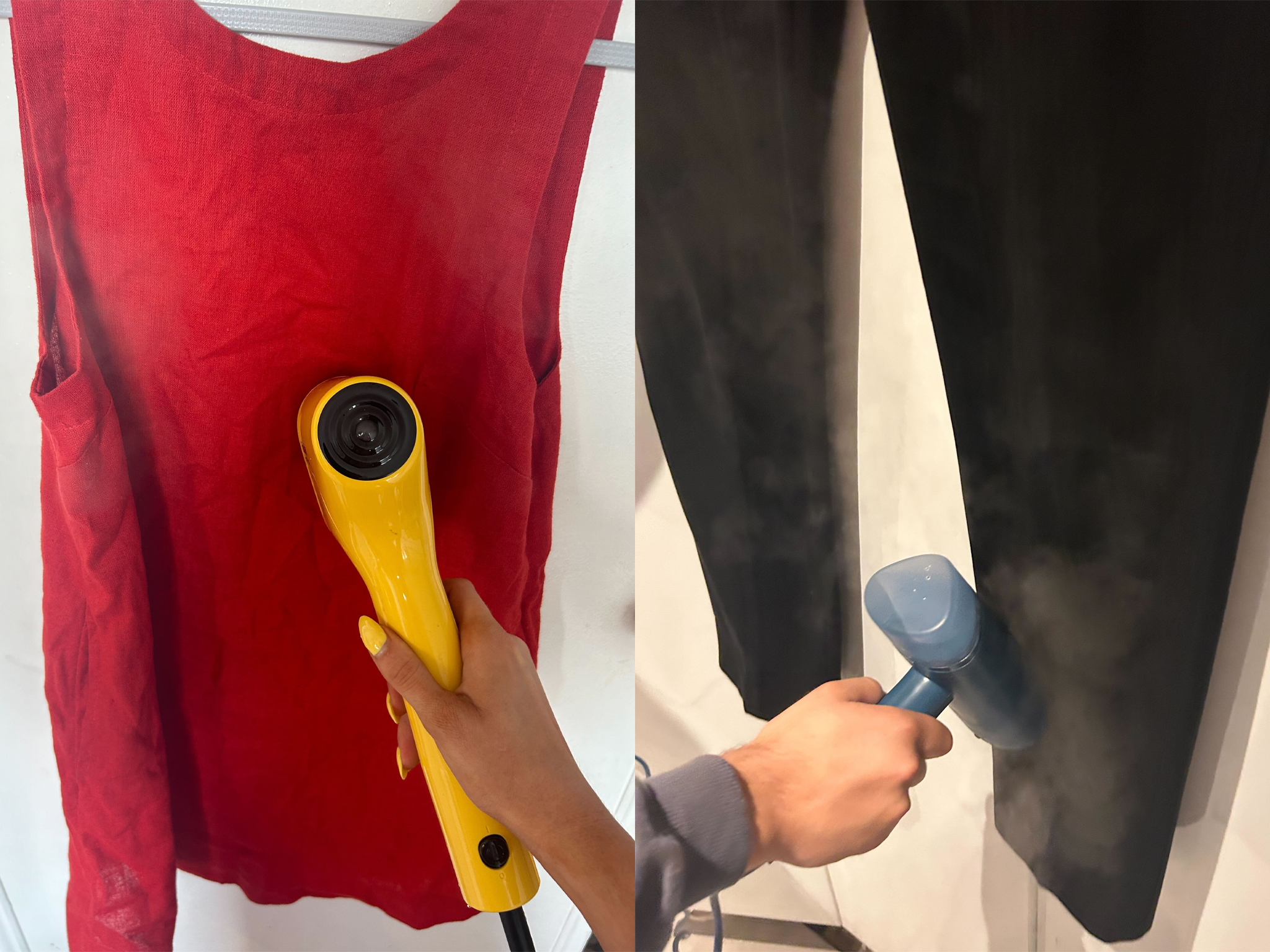
Davey adds that steamers “take the stress out of holiday packing – you don’t have to be as neat or tactical about packing certain items, as you can just steam before wearing them.”
A clothes steamer should be versatile enough to tackle a wide range of fabrics, from “suits, dresses, jackets, to things like veils and soft furniture like tablecloths and drapes/curtains”, says Fridja. “Both tools have their place, but for me, a steamer fits into daily life more conveniently.” According to Davey, clothes steamers also “last for years, especially if you use filtered water (to stop it getting limescale)”.
When should you use an iron on clothes?
As well as tackling larger loads, an iron also allows for more precision. “If you’re after a cleaner, crisper look, then you’d choose to go with an iron over a steamer,” says Connelly. “It gives you much more control over the direction of the sharp lines you’re putting into clothing.”
Ironing is also best for heavier fabrics such as cotton and denim, which require more pressure and heat to flatten deep wrinkles. This is “something that can be hard to achieve with a steamer, which may not remove them entirely from heavy materials, or they might require more effort and time to do so,” says Connelly.
Read more: Best steam irons that make light work of stubborn creases
Forgione agrees: “If you’re aiming for that fresh-press, professional finish, an iron is a better choice.” So for structured garments, such as dress shirts, trousers, and anything with pleats or collars, an iron could be the way to go.
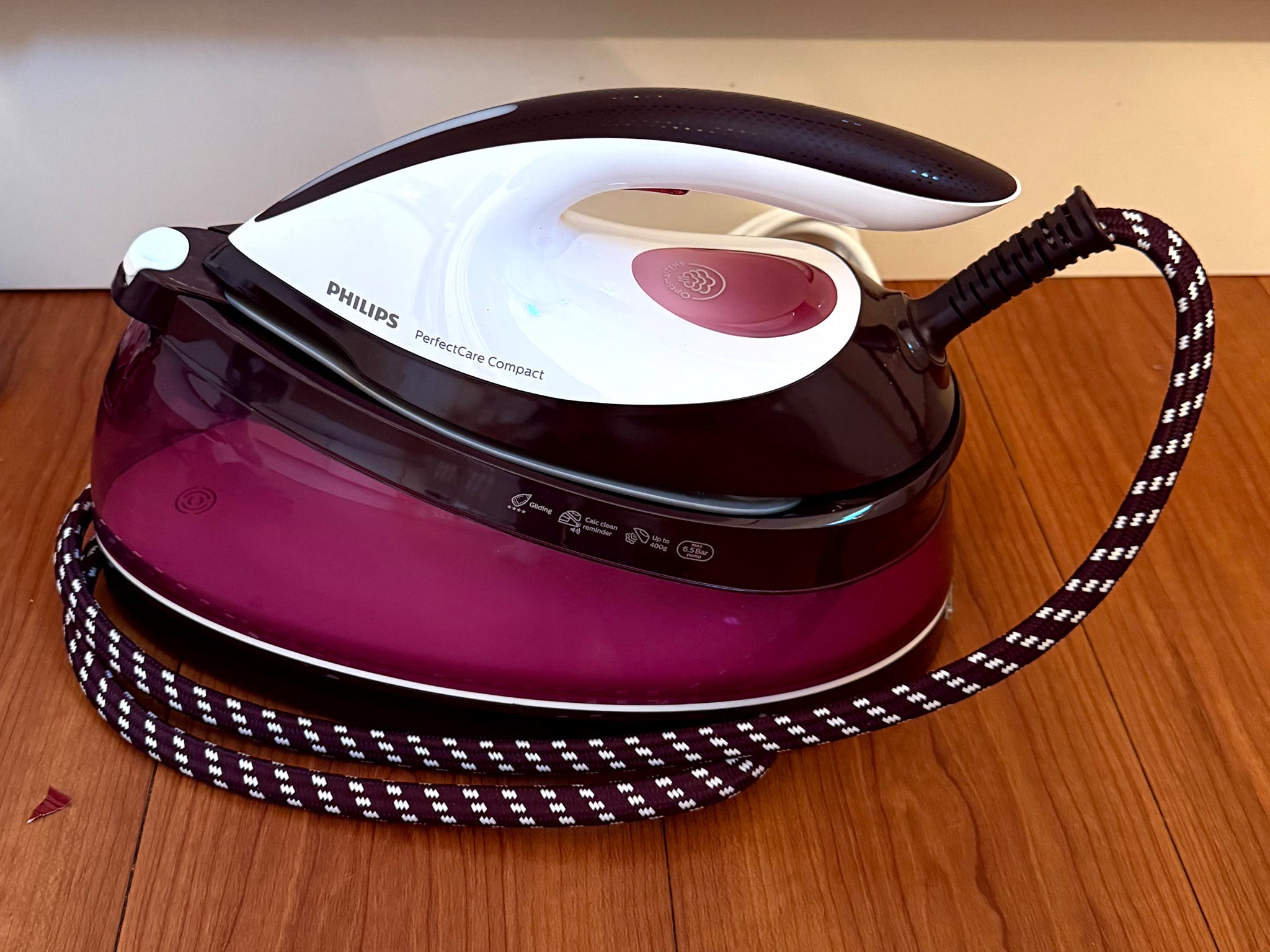
When should you use a steamer on clothes?
“Since they don’t directly touch the fabric, steamers are great to use on delicate fabrics like silk, wool and lace,” says Forgione. Unlike irons, steamers can also be used on things such as curtains and upholstery in situ. “The high temperature of the steam can also help eliminate bacteria and remove lingering odours, making them a handy tool for freshening up outfits between washes,” says Forgione.
Davey adds: “Steaming works best on dry, clean clothes, but it also helps to deodorise items that may need a little refresh – perfect for jeans that you may not wash as frequently as the rest of your wardrobe.”
Read more: Best clothes steamers to banish creases
You could even use a steamer to sanitise your kitchen and break down grease. “For example, if you have any sticky residue left on your fridge shelves, you can add the microfibre cloth attachment to steam and wipe the stains away,” explains Forgione.
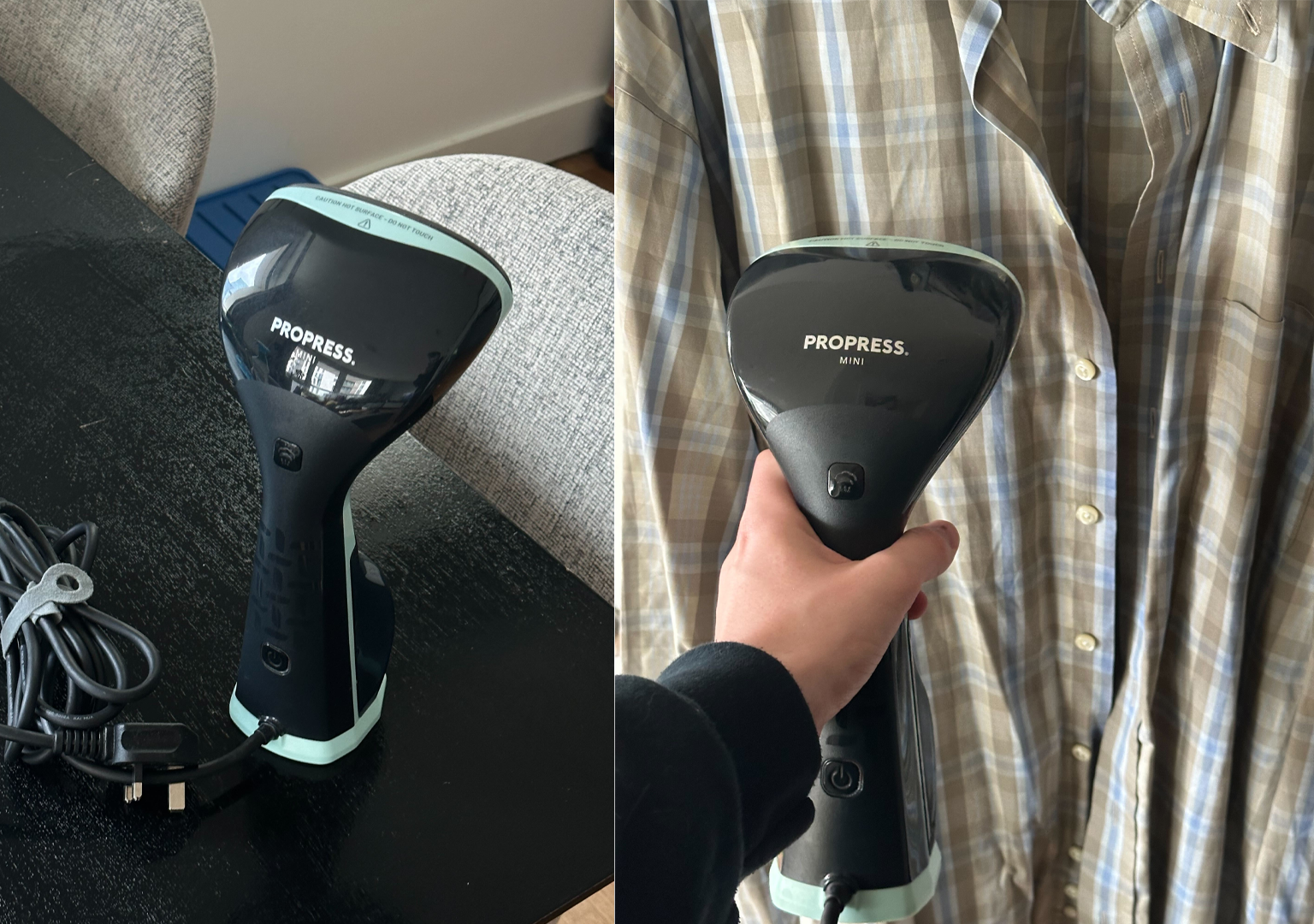
If you’re wondering whether the steamer plates can directly touch the clothes, Davey confirms the answer is yes, but within reason. “Much like how you would an iron, you can use it in a similar way, but be careful if you have a more delicate item such as satin or lace, as it does get very hot,” she explains. Another top tip is to add a clean, white sock over the steamer. “You’ll still get a good amount of heat and steam, but it’ll just stop any spray, which isn’t ideal before you head out.”
Which is faster to use?
“In terms of overall convenience, a steamer often wins,” says Fridja. “By the time you set up an ironing board and wait for the iron to heat up, you could already have steamed your clothes.” He also makes the case that steaming is more “intuitive and natural, since the clothes are hanging as you’d wear them”.
“Generally, steamers are faster,” agrees Forgione. “However, keep in mind that their smaller water tanks may need more frequent refilling.”
Which clothes steamer should you buy?
When selecting a clothes steamer, consider models that come with various attachments for extra versatility (think brushes for upholstery, lint removal, or delicate fabrics). It’s also recommended to check the size of the water tank. “A larger tank allows for longer steaming sessions before needing a refill,” says Forgione. “It’s also important to look at the heating time. If the steamer heats up quickly, you’ll spend less time waiting to use it.”

Russell Hobbs steam genie two-in-one handheld clothes steamer

Steamery cirrus 2
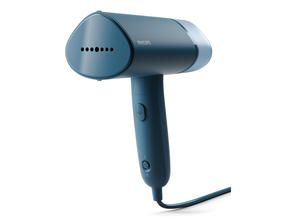
Philips 3000 series handheld steamer
Which iron should you buy?
“If you’re ironing regularly, look for a lightweight model, so it’s easy to lift,” Forgione advises. “Additionally, the more powerful it is, the stronger the steam output, which helps with stubborn creases.”
When it comes to features, Connelly says to look into the kind of soleplate that fits best with the items you’re ironing. “For home use, I recommend ceramic or non-stick soleplates, for smooth gliding and even heat throughout the plate, making it gentler on fabrics,” he says. “A steel soleplate is known for its longevity, strength, and fast heating, although you run the risk of the occasional sticking or snagging on some fabric textures.”
If it’s precision you’re after, “make sure you look at the tip style and go for a precision tip which can help you navigate around buttons and collars more easily.”
Another thing to consider is steam output. For example, “a vertical steam can make steaming hanging garments easier”. As for wattage, “if you’re regularly ironing heavier fabrics and doing several loads at once, I recommend a higher wattage of 1,500W+, which allows the iron to heat up quickly and maintain that temperature for a longer period of time,” adds Connelly.
Finally, consider water tank capacity. “If you tend to do your ironing in one go or large loads at a time, you might look for a larger tank (250ml+) for fewer refills during an ironing session,” he says.

Russell Hobbs power steam ultra steam iron
This relatively affordable buy took the top spot in IndyBest’s roundup of top-rated irons. “For hard-to-banish wrinkles and creases, this iron was hard to beat,” said reviewer Zoe Phillimore. “It saw off stubborn creases easily, and the tapered tip was fab at getting into tight corners. School shirts looked brand new after a going-over with this power steam machine – and the button groove meant minimal fuss when ironing.” Better yet, you can even do vertical steaming with this iron. “You can adjust the temperature on the dial and the amount of steam it jets out. “The steam function was absolutely drip-free, too.”

Russell Hobbs plug and wrap steam iron
“Designed to be easy to store, this is a great iron if you’re short on space, as the cable tucks away neatly and the plug tucks into the base,” said IndyBest reviewer Zoë Phillimore, when she put this iron to the test. Costing less than £30, this is a compact, full-size design, making ironing a load of washing relatively quick. Zoë liked the fact that the temperature control makes it “safe for all ironable fabrics”, adding that the budget-friendly buy is a great option for students.
Shop more of the best tried and tested clothes steamers and traditional irons









